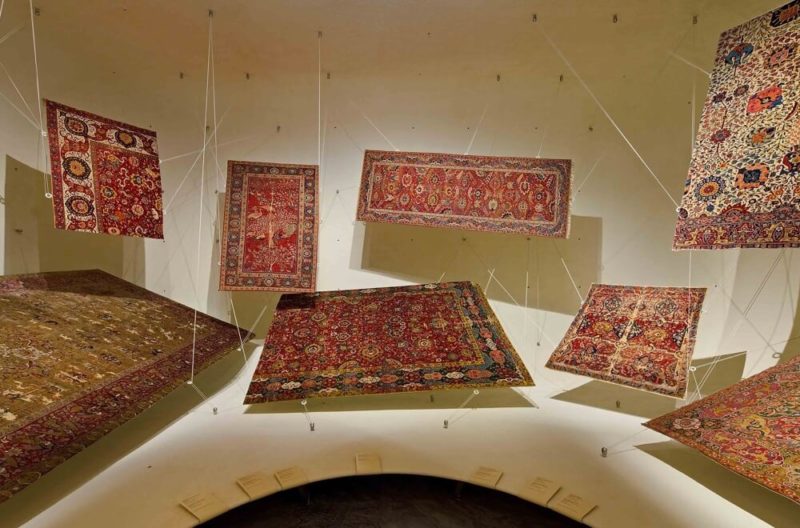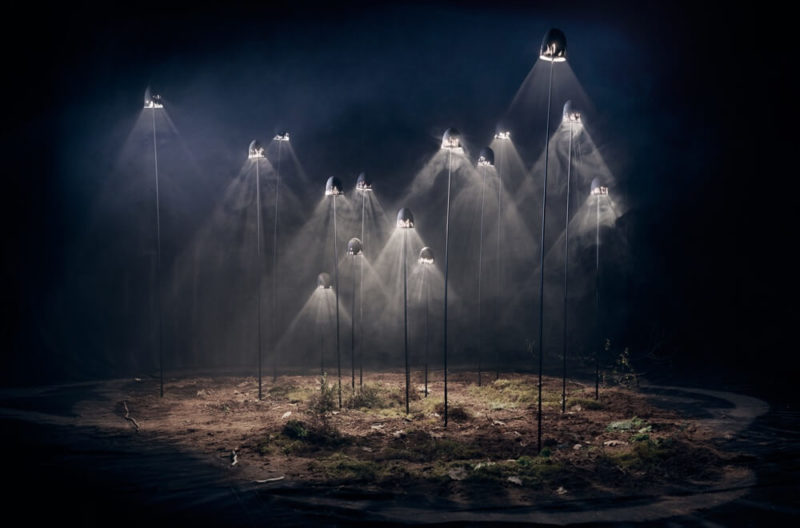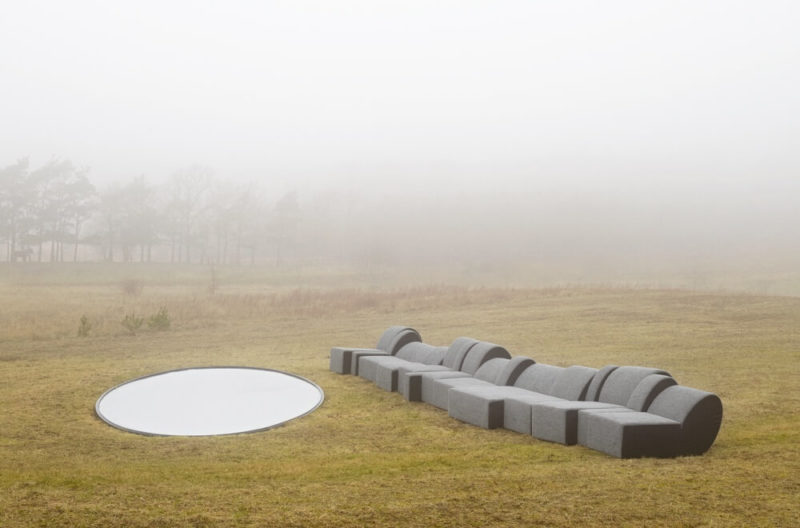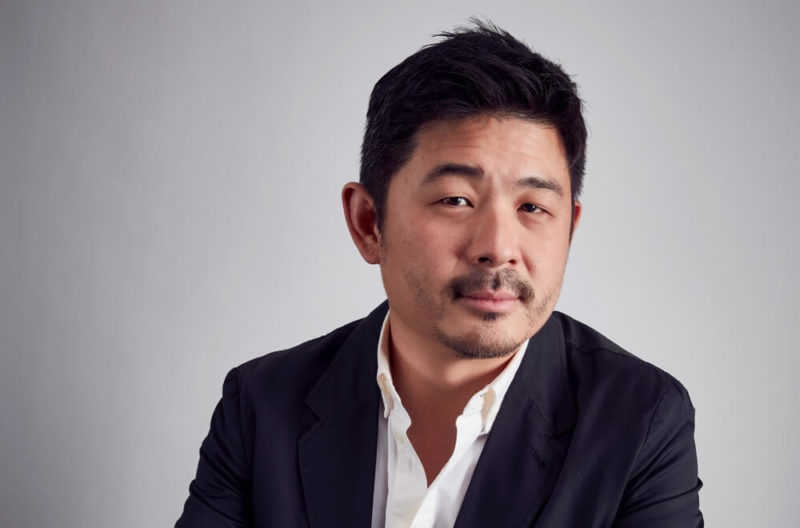Adorno: Crossovers
A cross-cultural collectible design journey.
London Design Fair
19th – 22nd September, 2019
WHEN DANISH DUO Kristian Snorre Andersen and Martin Clausen co-founded Adorno, a digital design store and gallery, in 2016, they were able to pool their different specialist skills. Snorre Andersen, who had done an MA at Aarhus University and Martin Clausen, a graduate from The Royal Danish Academy of Arts met serendipitously: “Kristian wanted to launch a platform to source all the rare and beautiful designs he had seen on his travels,” explains Clausen, Adorno’s creative director. “Meanwhile, I had ambitions to use my branding and web design skills to help designers start their own practices and realise their visions – instead of working for larger design brands. This shared idea led to visiting many design communities and connecting with curators.”
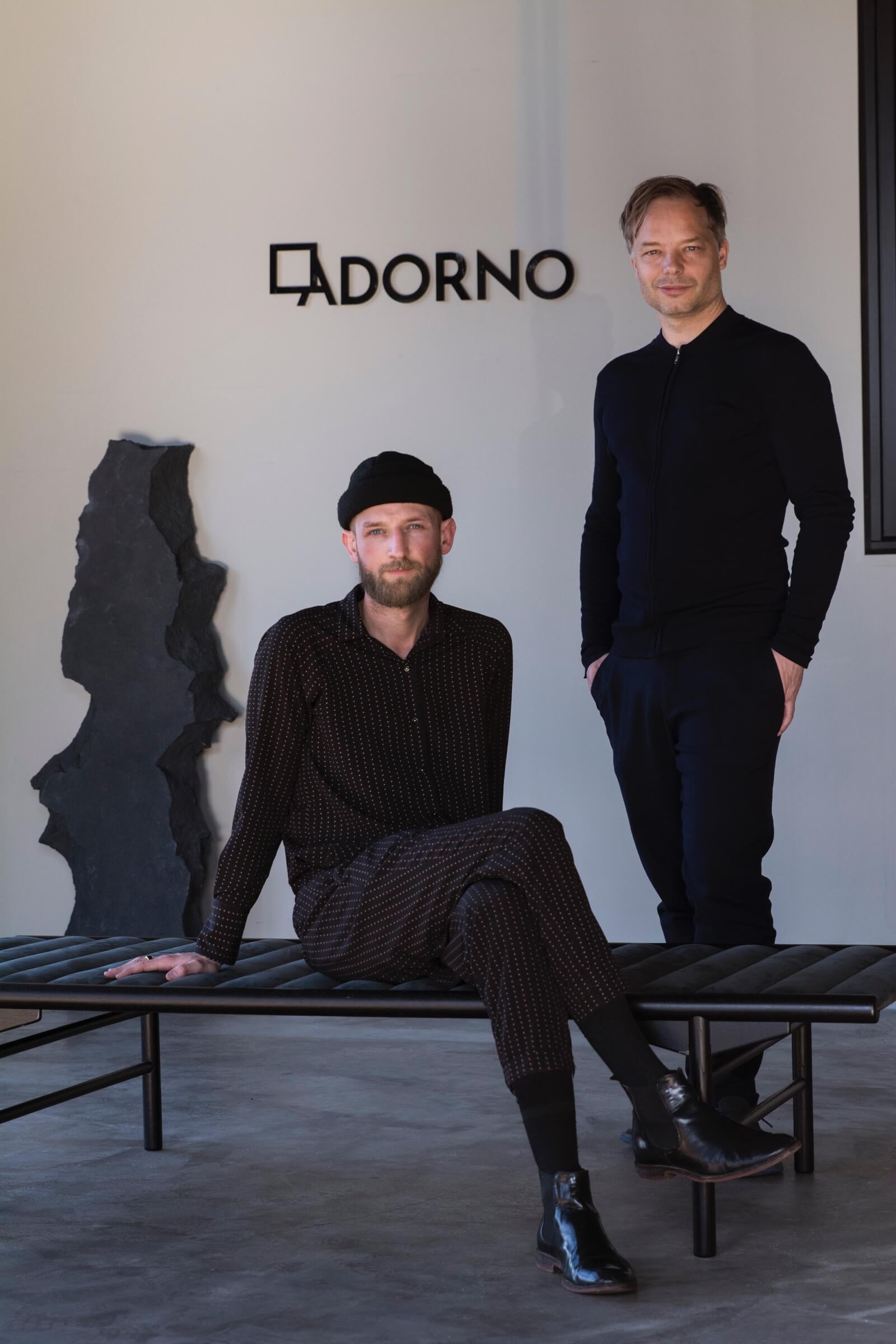
Co-founders of Adorno: Martin Clausen (left) and Kristian Snorre Andersen (right)
COURTESY: Adorno / PHOTOGRAPH: Irineu Da Silva
Adorno has since carved a niche as an uber-cool brand that mounts physical and online exhibitions of limited-edition, or one-off work, by independent designers from specific cities and regions. The platform allows many designers unknown in other parts of the globe to come to the attention of collectors, buyers, curators and inquisitive design fans worldwide. “Our goal of establishing a locally rooted international design collaboration has since been well received,” says Clausen. Unusually, perhaps, their collaborative approach was inspired by long-established Danish cooperatives in agriculture and fishing, which they believe have much in common with 21st-century working practices: “The collaborative aspect of our business is now increasingly common in tech and peer-to-peer companies,” says Snorre Andersen, Adorno’s CEO.
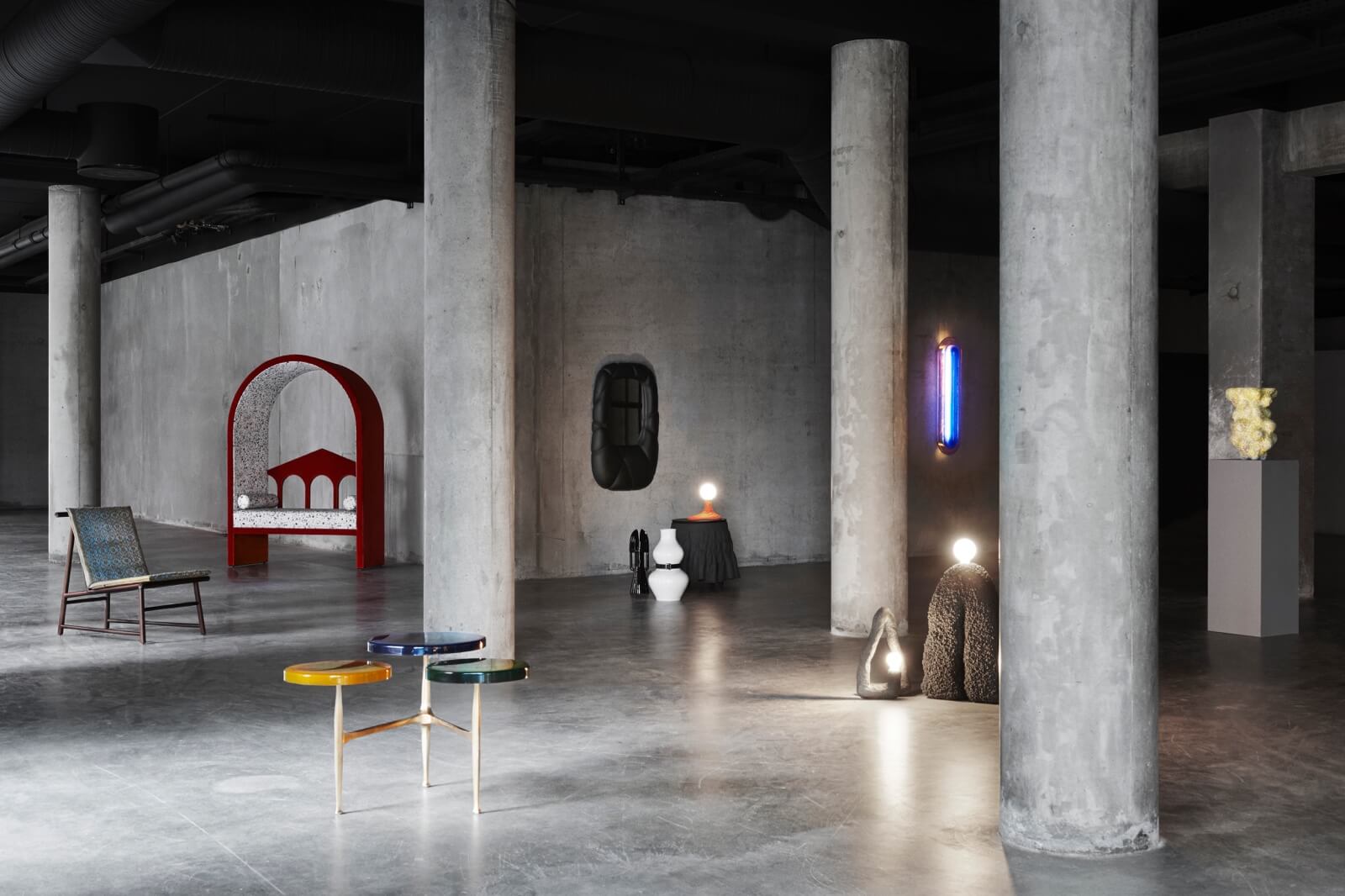
From left to right: Laura Noriega, ‘Your Skin’; Vito Nesta, ‘Via Fucini 5’; Draga & Aurel, ‘Agatha’ table; Farg & Blanche, ‘Succession Mirror’ and ‘Kilt’ table; Stine Mikkelsen, ‘Luminous Shapes’; Draga & Aurel ‘Joy’ wall lamp; Gurli Elbækgaard, ‘Geomorfologi’
COURTESY: Adorno / PHOTOGRAPH: Tommy Frost
Adorno aims to shed light on how each locale’s design has a unique character shaped by cultural, political and geographical factors, and reveals trends in different regions. Its exhibitions sometimes present a more complex picture of a country’s design output than stereotypical perceptions normally allow. “We’re interested in documenting the designers playing a vital role in moving their local design scenes forward,” says Clausen. Last year, Adorno showed work by emerging Lebanese designers during Beirut Design Week. Soon after it presented furniture and crafts from Norway, Denmark, Sweden, Finland and Iceland at the Copenhagen-based CHART Art Fair and at the London Design Fair during the London Design Festival (LDF).
This year, Adorno will return to the London Design Fair, to be held at the Old Truman Brewery from 19th -22nd September, with a new show called ‘Crossovers’. Adorno’s shows are a natural fit at this LDF institution, one of whose main attractions is its Country Pavilions — exhibitions of work produced in different nations. “We welcomed Adorno in 2018,” says Jimmy MacDonald, founder and director of the London Design Fair. “This year, we wanted to create a platform for collectible design — now so important to the interiors’ market — so who better to collaborate with than Adorno?”
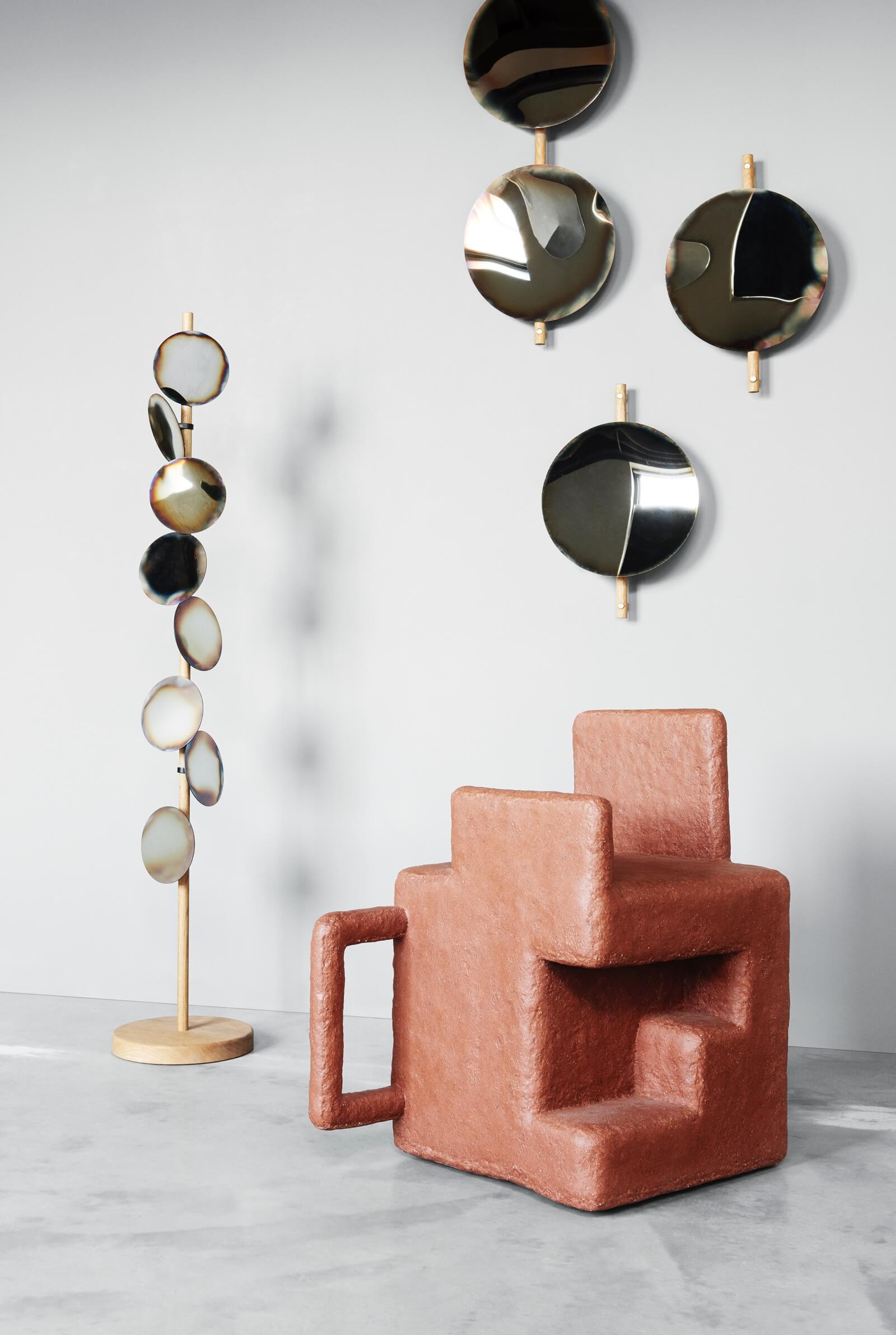
Troels Flensted, ‘Perception – Floor’ mirror and ‘Perception – Wall’ mirror; Stine Mikkelsen, ‘The Art of Sitting’
COURTESY: Adorno / PHOTOGRAPH: Tommy Frost
‘Crossovers’ is more ambitious than previous Adorno exhibitions. It will showcase design from eleven countries — Belgium, Denmark, Finland, France, Iceland, Italy, Mexico, Norway, Sweden, Switzerland and Turkey. While wide-ranging, this line-up might seem a bit arbitrary. How did Adorno select these countries? “We wanted a range of European and non-European countries to be represented, to create diversity and a multi-directional design dialogue,” says Martin. “If we had the resources to exhibit more, we would — and plan to in the future.”
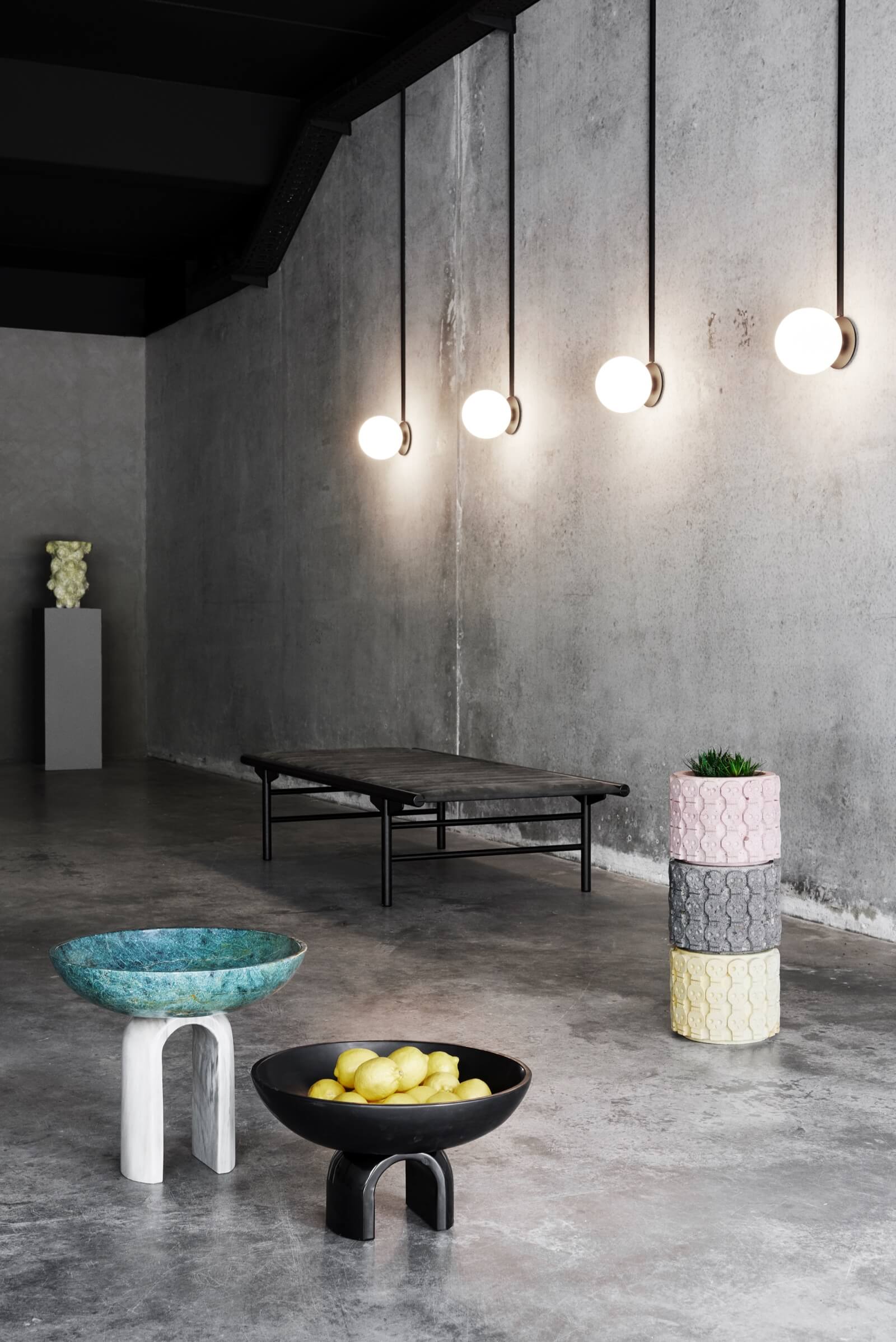
Adorno Mexico Collection for Crossovers
COURTESY: Adorno / PHOTOGRAPH: Tommy Frost
“Crossovers differs from our other projects as it will allow audiences to see and compare the uniqueness thriving in these geographically distant communities in one space. The works we’re showing are seen as an answer to globalised uniformity. We want to highlight and preserve the value of locally produced designed.” Among those representing Sweden is the relatively established duo Fredrik Färg and Emma Marga Blanche, who will present their idiosyncratic collection of lamps and tables, ‘The Baker’s House’, inspired by a crispbread factory once owned by Blanche’s family.
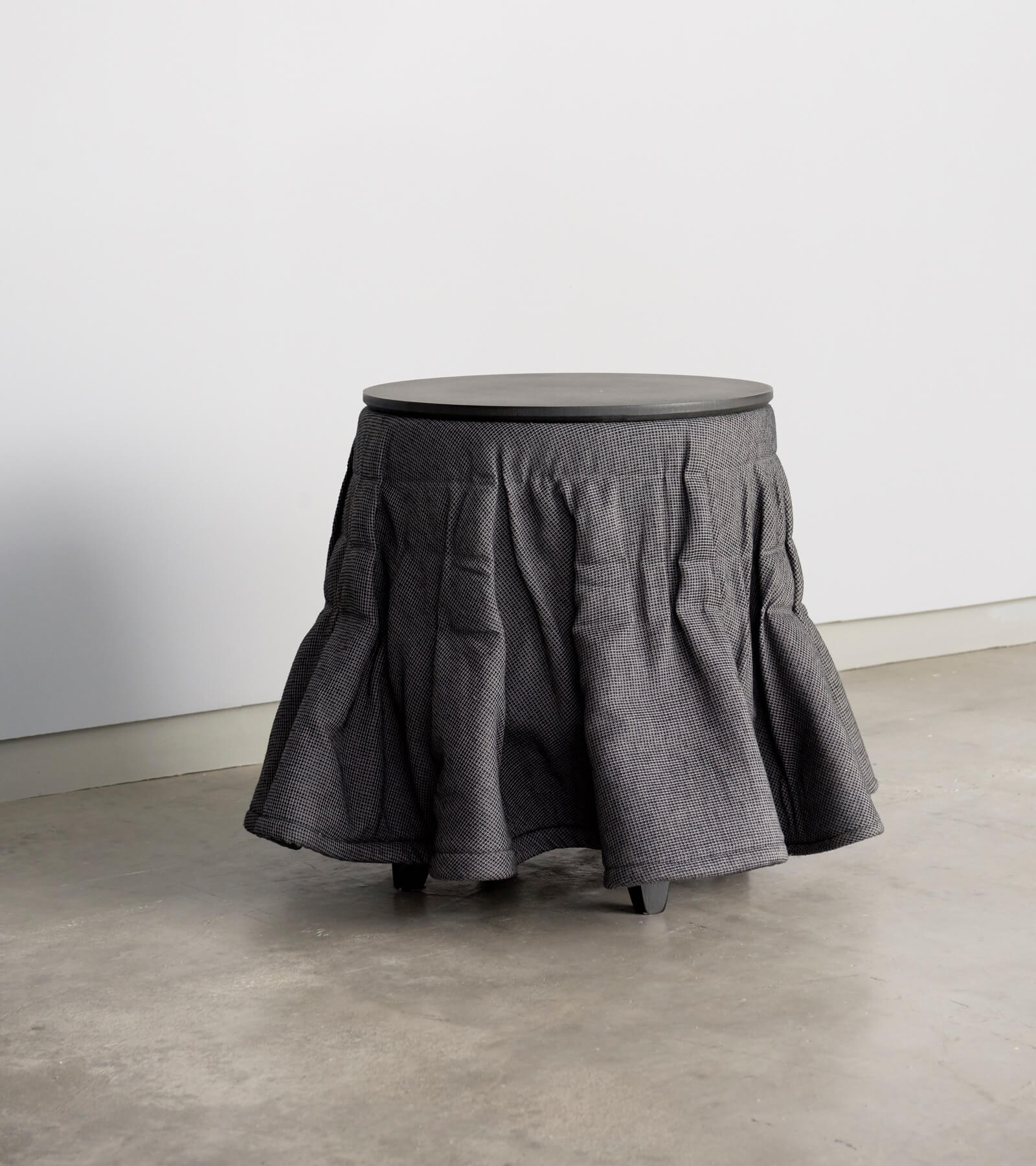
Farg & Blanche, ‘Kilt’ table
COURTESY: Adorno / PHOTOGRAPH: Tommy Frost
Another Swedish designer, Anna Kraitz, will show her anthropomorphic porcelain vases with leather belts tightly bound around their hourglass forms.
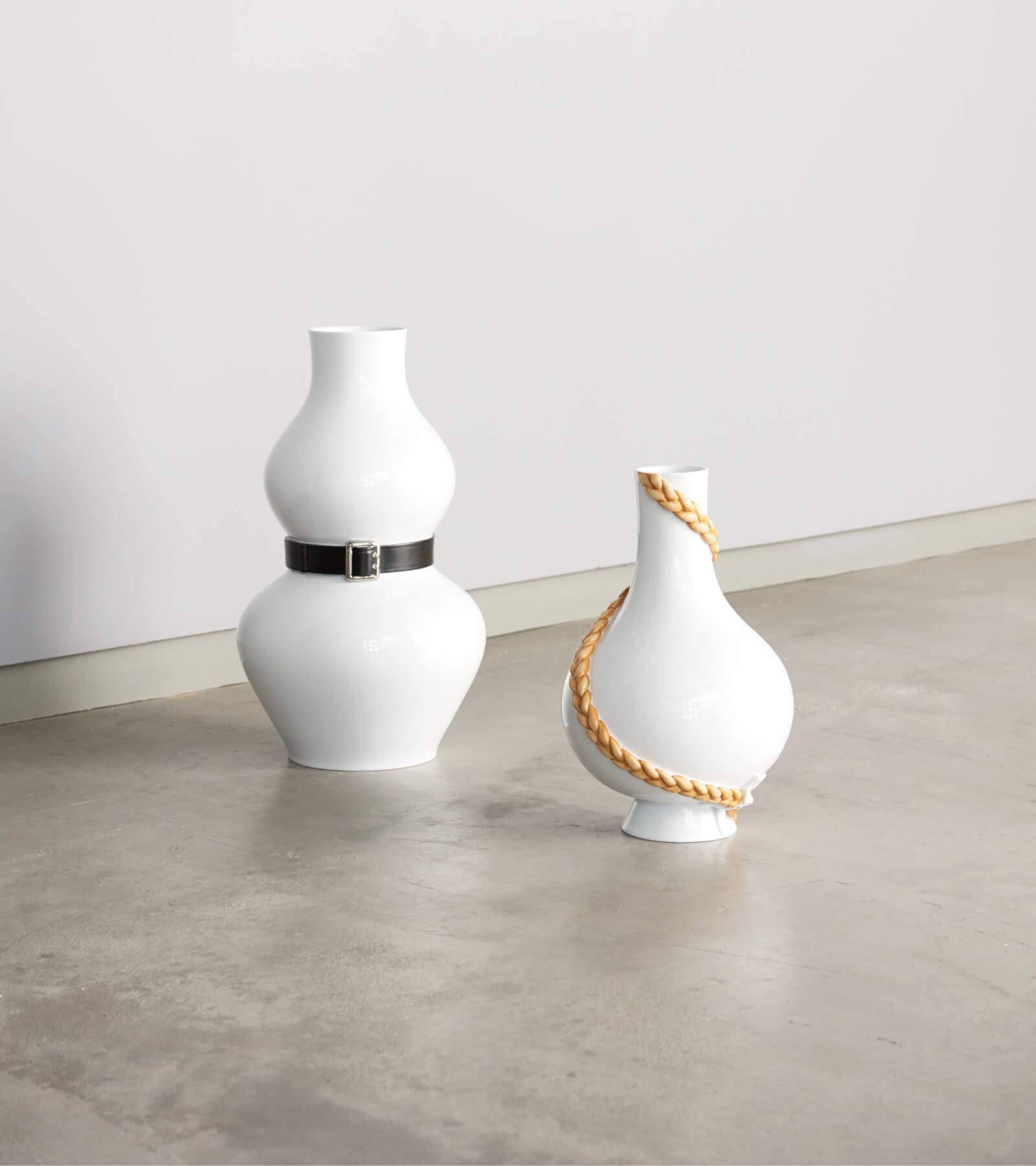
Anna Kraitz, ‘Early Bird’ vase with belt (left) and ‘Early Bird’ vase with braid (right)
COURTESY: Adorno / PHOTOGRAPH: Tommy Frost
The Danish contingent includes Stine Mikkelsen whose rough-textured, ruggedly sculptural ‘Luminous Shapes’ lights challenge preconceptions of industrial design as sleek and solely functionalist. One Swiss exhibitor, Geneva-based Argentinian designer Josefina Muñoz, rescues uneven, conventionally undesirable blocks of marble to make her characterful, handcrafted ‘Game of Stone’ tables.
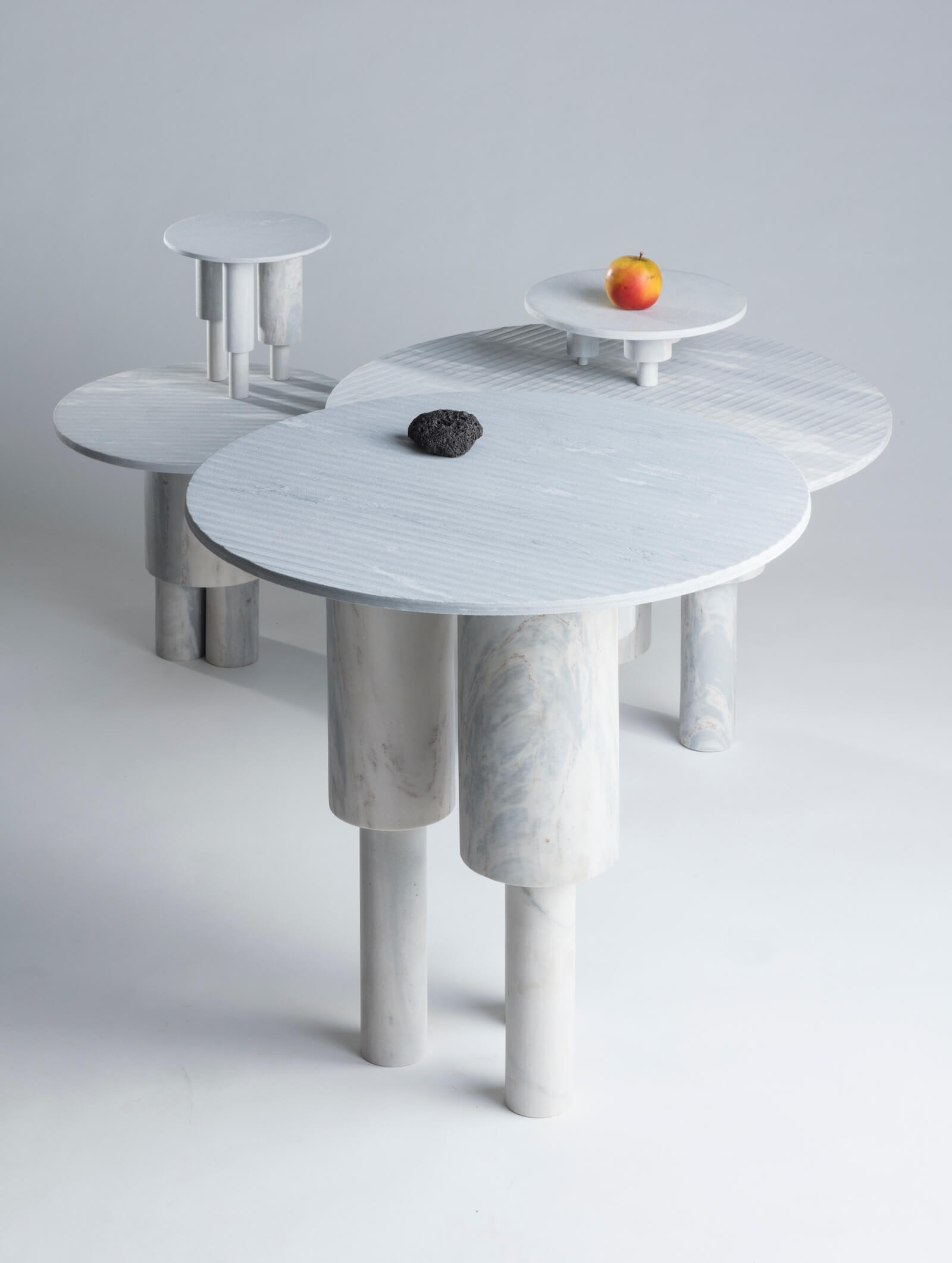
Josefina Muñoz, ‘Game of Stone’ collection
COURTESY: © Baptiste Coulon
Norwegian designer Henrik Ødegaard will show his blue lacquered pine bench ‘Slurp’, featuring biomorphic holes made by removing knots in the wood. His pieces value the sculptural impact of negative spaces, and explore how far designers can go in minimising their use of materials while still creating functional pieces.
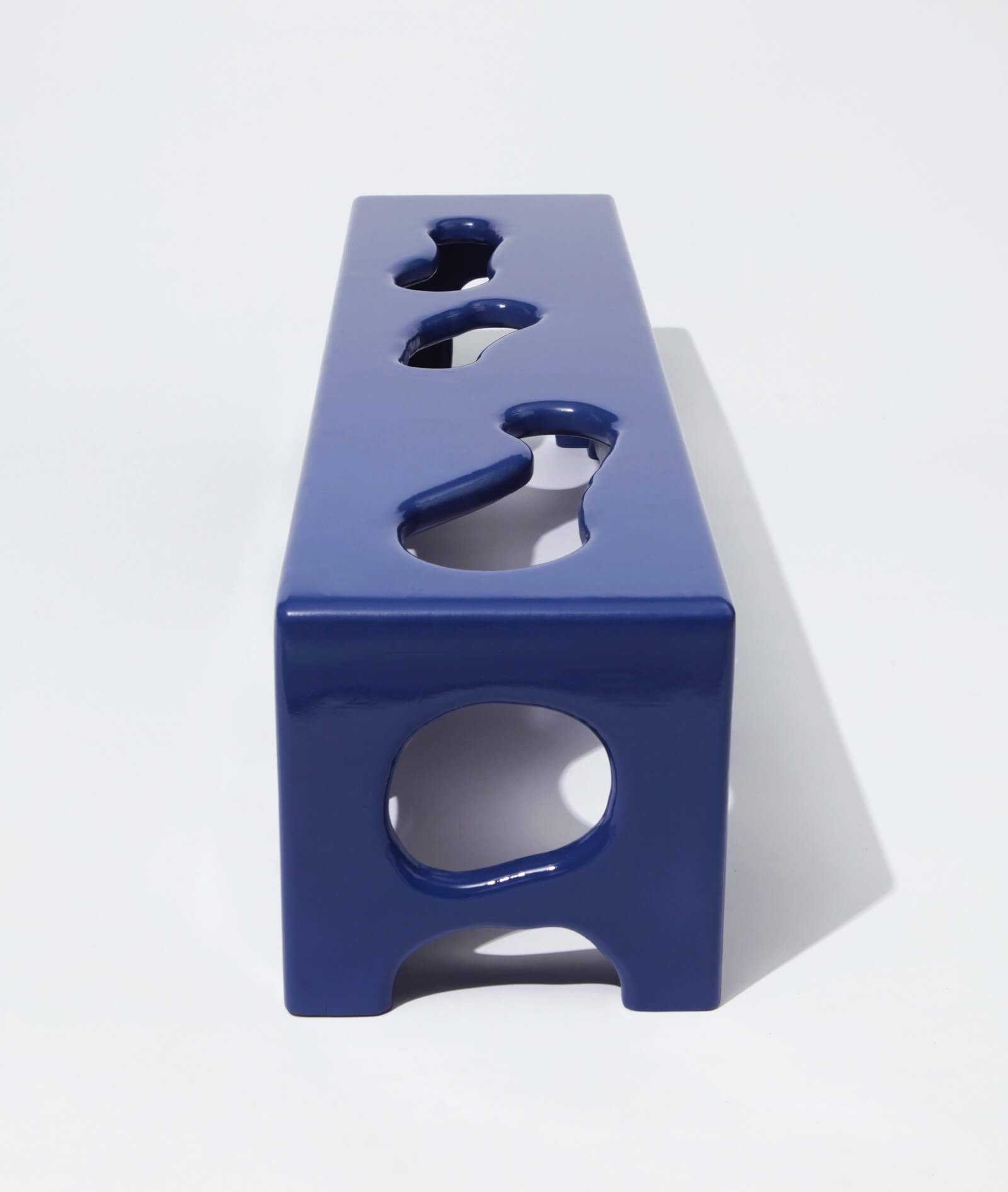
Henrik Ødegaard, ‘Slurp’ bench
COURTESY: Adorno / PHOTOGRAPH: Rumi Baumann
Helsinki-based Aalto + Aalto will exhibit its whimsical but elegant cabinet with drawers shaped like arches, supported by spindly branch-like legs. Fellow Finn, Veera Kulju, will show her ‘Queen of the Dessert’ porcelain vase, whose refined material is subverted by its bizarre, frothy excrescence made of popcorn trapped in the glaze. “Irony is big in Finnish design today,” comments Clausen.
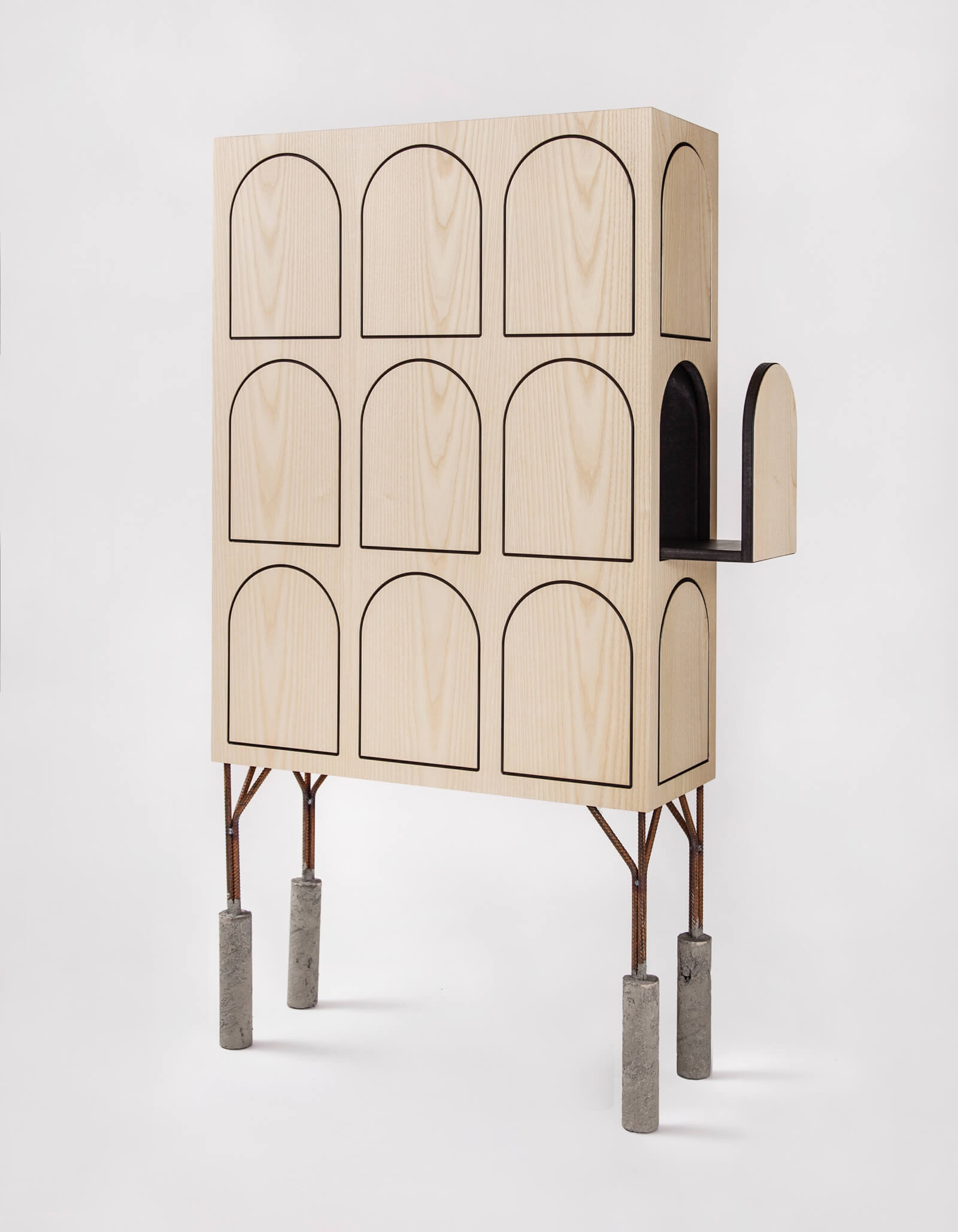
Aalto+Aalto, ‘Primitive Illusionist’ cabinet
COURTESY: Adorno / PHOTOGRAPH: Aalto+Aalto
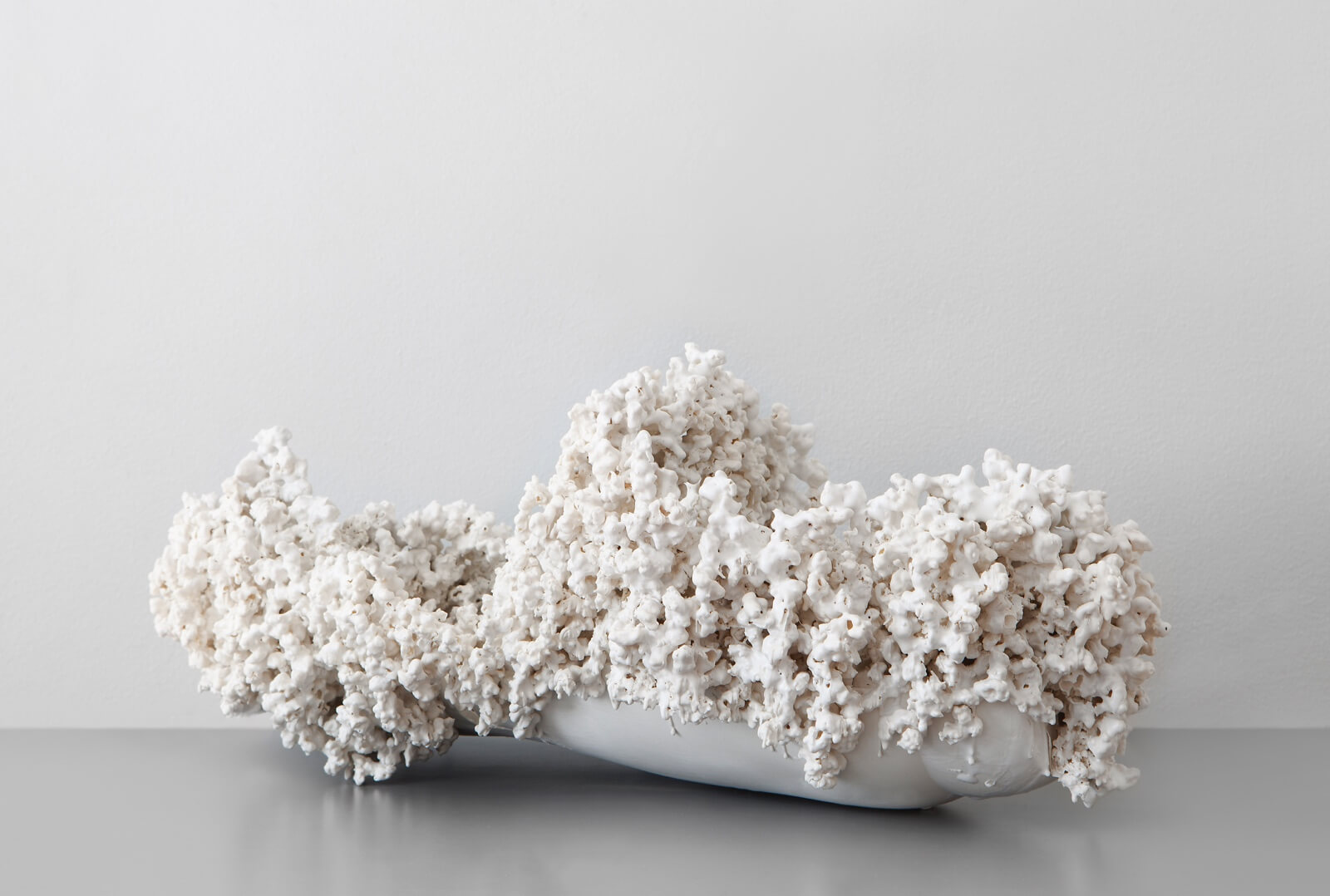
Veera Kulju, ‘Queen of the Dessert’
COURTESY: Adorno / PHOTOGRAPH: Chikako Harada
The Mexican showing is bound to attract attention since its design is perhaps less well-known in the West. That said, its pieces are relatively traditional — not surprisingly, perhaps, since many contemporary Latin American designers are interested in preserving and promoting ancient, indigenous crafts, in part to boost local manufacturing. For example, Piedrafuego’s ceramic planters studded with skulls reference the Day of the Dead and Pre-Columbian crafts. Laura Noriega’s ‘Your Skin’ chair for her company Tributo is marginally more experimental: it’s upholstered with a handwoven textile from Oaxaca made of recycled plastic and cotton. “Handcrafted and natural materials are the main themes among these designers,” says Ana Elena Mallet and Pilar Obeso, co-curators of the Mexican section.
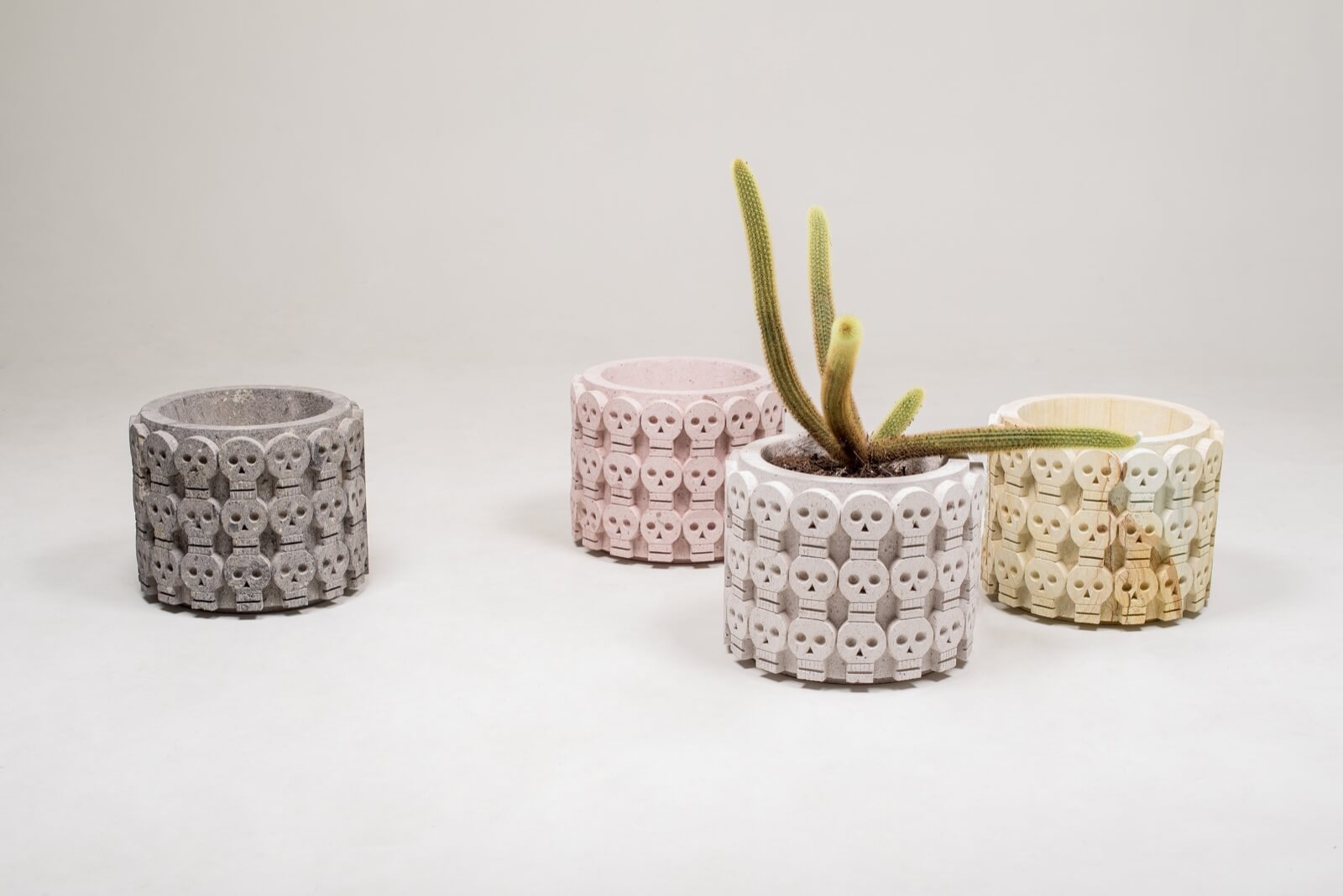
Piedrafuego, ‘Tzom’ planters
COURTESY: Adorno
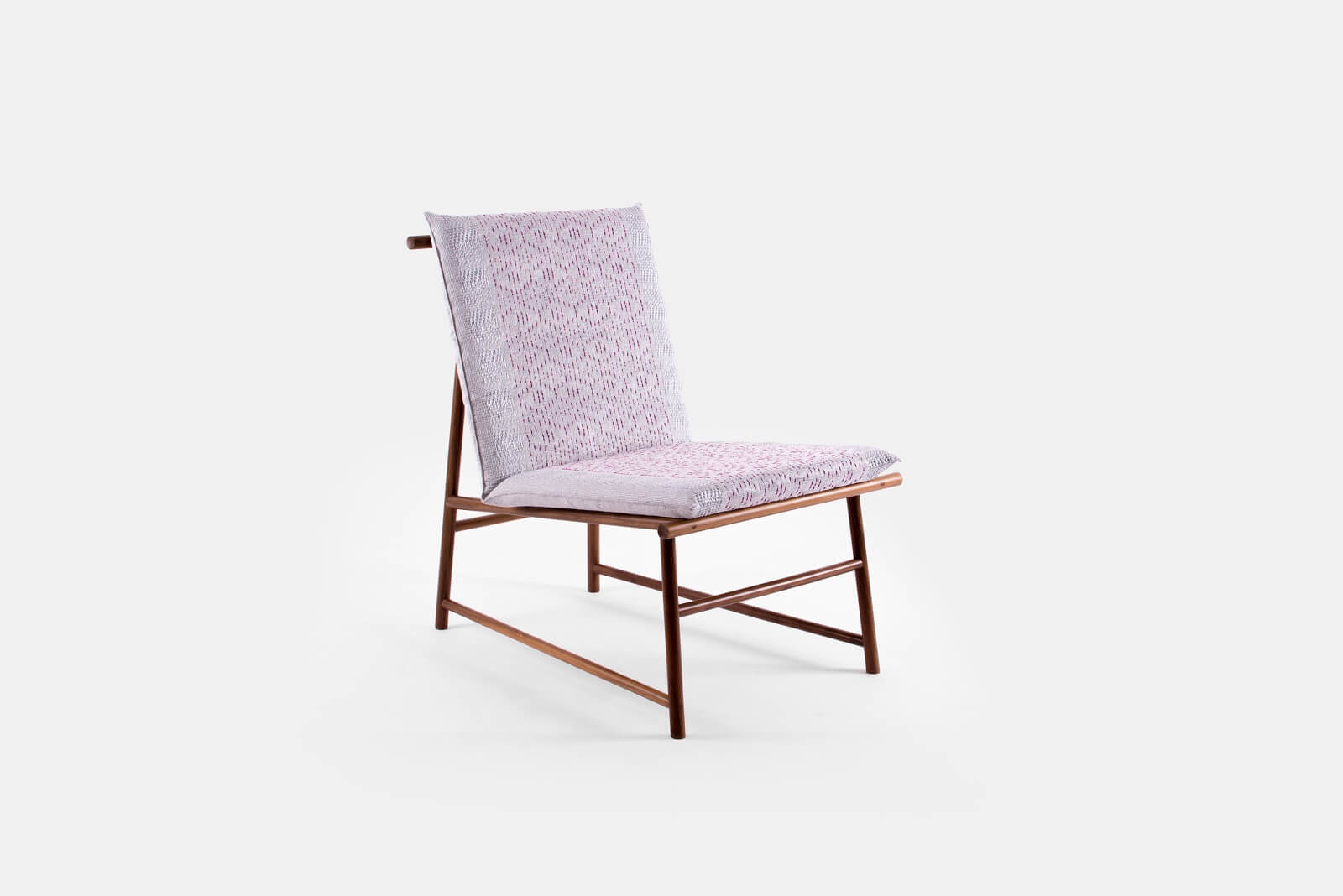
Laura Noriega, ‘Your Skin’ chair
COURTESY: Adorno / PHOTOGRAPH: Tributo
Arguably, there’s a paradox in the Adorno enterprise. By showing work from different countries together, isn’t Adorno encouraging the cross-pollination of ideas, which may in turn erode national differences? “We can’t avoid cross-pollination and we shouldn’t,” says Clausen. “Today, designers are inspired by each other every second online. The interesting thing is to see how an idea from Latin America, for example, might shake up and transform Nordic values. Ideas and innovation come from diversity.”
Adorno presents ‘Crossovers’ – a cross-cultural collectible design journey.
Work can be ordered from the Adorno platform. Prices range from E100 – E11,000.




